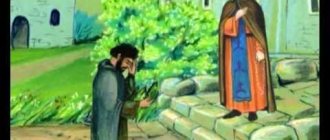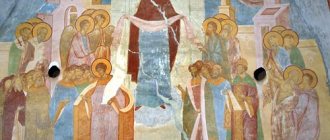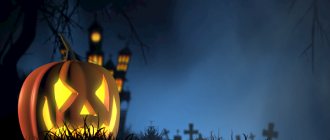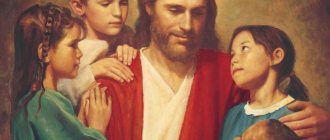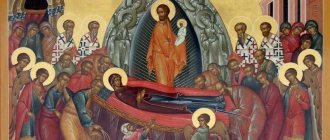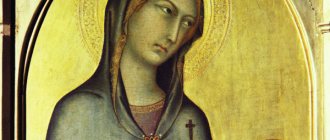History of Halloween
The Halloween holiday originated many millennia ago among the Celtic tribes who lived in the territory of modern Ireland. Their calendar contained only two seasons: winter and summer. On November 1, the Celts celebrated the New Year, and October 31 was considered the day when the world of the living and the dead united into one. People believed that during this period, inhabitants of other worlds came to earth. The night from October 31 to November 1 was called Samhain.
To prevent evil spirits from harming them, people extinguished the fire in their houses and dressed up in animal skins, thereby scaring away guests from the other world. On this day, it was customary to place food for spirits near the house, make sacrifices and light a sacred fire in pumpkins.
In the 1st century, Christianity began to spread, and all pagan holidays were forgotten. But not Samhain. People remembered it and told it to their descendants, and eight centuries later the holiday began to be celebrated again, calling it All Hallows Even; later the name was shortened to the familiar Halloween.
Today the holiday is a favorite celebration of children and youth in many countries of the world, when they dress up in all kinds of costumes, go from house to house, scare each other, exchange sweets and scary stories
Today, following the example of the Celtic tribes, on this day it is customary to dress up in costumes of evil spirits, so that the evil spirits coming to earth will mistake a person for one of their own and not touch him. Also considered an integral attribute is a pumpkin, on which an ominous face is carved, and a candle is placed inside.
In honor of Halloween, parties and various entertainment events are held.
The emergence of foreign cultural innovations like “Halloween,” which has nothing in common either with the morality of Christianity, or with the saints, or with the moral ideas and traditions of the peoples of Russia, has become natural.
Halloween has most widely penetrated the youth environment. On the night of November 1, many high school students, university students and young men and women under 30 will put on the fiends of hell and take part in the Sabbath, often accompanied by the consumption of alcohol, energy drinks, and stronger stimulating substances.
Halloween is not a traditional element of the culture of our multinational country; it does not and a priori cannot have any important educational or educational function. On the contrary, many specialists, child psychologists, and qualified teachers note its destructive influence on the younger generation; its cultivation is contrary to secular education and can negatively affect the mental health of children. In their fragile, still emerging psyche, the concepts of good and evil are mixed, which is unacceptable. Children who take part in such events often experience fear of darkness and loneliness, depressed mood, suicidal tendencies, they develop enuresis, unmotivated aggression, nightmares, and other mental disorders and neuroses. Moreover, all this may not happen immediately, but after some time.
HISTORY OF THE HOLIDAY
The history of the Halloween holiday dates back to pre-Christian times. It is believed to be a Celtic holiday celebrated at the turn of the seasons. We can say that this is a kind of pagan new year. The ancient Celts were pagans, that is, they worshiped the forces of nature. And one of the most important was, of course, the Sun God, who gives people warmth and light. However, with the onset of November, the god of darkness and death Samhain came into his own, pushing aside the sun god. On that same night, the gates opened, separating the world of the dead from our world, and otherworldly forces could influence the living.
To scare away evil spirits, the priests performed special rituals: they lit huge bonfires and made sacrifices. And in the morning, coals from the ritual fire were distributed to people so that they could light their hearths with their help. The sacred fire, born from a particle of the sacrificial fire, was supposed to protect homes from evil throughout the year.
After the Roman legions captured the Celtic lands, they began to actively introduce their own traditions. Instead of the day dedicated to Samhain, they began to celebrate a holiday in honor of the Roman goddess. This holiday among the Romans was associated with the remembrance of deceased ancestors. Therefore, the meaning of the holiday has not changed much, and the traditions are closely intertwined.
After the spread of Christianity, the Church was very active in eradicating pagan traditions. However, sometimes the Church's actions had the opposite effect. The origin of the Halloween holiday as it is celebrated today in most countries is associated with the decree of the head of the Catholic Church moving the holiday in honor of All Saints' Day to the first day of November. This significant event took place in the 8th century. And since then, the pagan holiday has been closely intertwined with the Christian holiday, and acquired the name that we use to this day. The fact is that the word “Halloween” is a distorted phrase, which is translated from English as “Evening in honor of all Saints.”
In the 19th century, waves of Irish emigration brought the holiday to the United States, where it has been celebrated since 1846. In the United States, the holiday has gained special popularity thanks to the gay community. In the 1970s, drag queen shows became popular in San Francisco in the city's gay neighborhoods. They put on bright theatrical costumes and paraded along the streets of the area. Over time, such events began to be held everywhere, with the participation of children or teenagers. The costume tradition was stylized according to existing images of monsters and characters from children's horror stories.
HOLIDAY ATTRIBUTES
Halloween has a very rich paraphernalia, the interest in which is actively exploited by modern companies producing goods for children (costumes, masks, candies, decorations, etc.). The desire of various companies (mostly American) to increase their profitability largely explains the spread of Halloween outside the United States, since in this country the market for Halloween products is already oversaturated.
One of the main attributes of the “holiday” is a “Jack-O-Lantern” in the form of a head carved from a pumpkin with lighting. Eaves, balconies and entrances of houses are usually decorated with artificial cobwebs, spiders, bats, witches, owls, cats, witches' brooms, etc.
Halloween costumes are also based on themes of witchcraft and its images in film and literature. Children, dressed in costumes and masks, go begging for sweets from homeowners, while uttering the traditional phrase "Trick or Treat!" - "candies or life!". Particularly popular are the outfits of witches, magicians, sorcerers, vampires, dead people, werewolves, ghosts, mermaids, fairies, elves, and various nocturnal animals (cats, bats, wolves, etc.). Parties and carnivals are held, accompanied by ominous, cemetery music, and the howls of wolves. , hooting owls and other sounds recorded in audio or video format. Hanging posters and laid out books depicting Dracula, witches, vampires and their symbols (aspen stake, black rosary, etc.) are popular.
HALLOWEEN IN THIS DAY
The religious cult of the devil and death in the content of Halloween is manifested literally in everything - in the external attributes and furnishings of the venues, costumes, music, the content of “festive” actions and entertainment. For many young people, Halloween has become an introduction to Satanism. The officially active “American Church of Satan” openly proclaimed this day as its holiday. Real sorcerers, witches, as well as Satanists, adherents of such youth subcultures as “goths”, “emo”, “zombies”, “vampires”, together with newly minted restorers of ancient pagan cults, organize on this day one of the main Sabbaths of the year, commit “black masses." For them, the purpose of the celebration, which ends with the most important black mass of the year, is to demonstrate their worship and devotion to the devil. In addition to Satanists, it was chosen as their main holiday by those who in our days consciously betray themselves to the service of evil - sorcerers, witches, and various restorers of ancient pagan cults. For them, Halloween night is the time of one of the four main Sabbaths.
It is known about numerous victims of the monstrous rampage of “evil spirits” on the night of November 1: poisoned, killed, hanged, burned. It was on this night that the custodian of the miraculous Montreal Icon of the Mother of God, Joseph Muñoz, was ritually and brutally murdered. In Sweden, a fire at a disco on the occasion of Halloween injured more than 200 people, including those from Russia. The earthquake in Italy in 2003 destroyed only one school - the one where children and teachers were celebrating a "happy Halloween." Dozens of students died. Cemeteries are also regularly desecrated on this night.
Despite all this, Halloween has firmly established itself in public educational institutions - universities, schools and even kindergartens! Our children are taught to celebrate this day with Satanists. In Russian schools, preparations for the celebration have been underway since September, with teachers and children writing scripts and inventing ingenious devices for sadistic stunts and terrifying costumes. In one of the schools, schoolchildren and teachers, dressed in masks of vampires, ghouls, murderers, monsters and other evil spirits, copied a human sacrifice - they drank tomato juice from glasses, symbolizing human blood.
Such events deprive the child of the opportunity to independently decide whether to participate in it or not, and the conduct of Halloween is currently left to the directors of educational institutions. Which, in turn, directly respond to parents - until they prohibit it, we will carry it out, since we consider it justified and necessary in the educational process.
If we talk about kindergartens, then children from 2 to 7 years old are too small and vulnerable and do not have sufficient knowledge to understand what they want to introduce them to under the guise of studying the culture of another country, especially in such institutions where from a small age age learning English. These are so-called bilingual kindergartens and other institutions with in-depth study of foreign languages.
It is arrogant and naive to reassure yourself that Halloween in your kindergarten is completely innocent, childish, and with the exception of pumpkins and “cute” Draculas, nothing like that ever happened. The danger of this kind of children's matinee is that children's consciousness gets used to this pseudo-holiday, mistakenly perceiving it as something normal, good and kind...
PSYCHOLOGISTS ABOUT HALLOWEEN CELEBRATIONS
According to Doctor of Psychological Sciences, Chief Specialist of the IPI RPO, prof. V.V. Abramenkova, the destructive consequences of the process of preparing and celebrating Halloween for children are:
- general demoralization of the consciousness of modern schoolchildren who participate in Halloween. Here there is a substitution and inversion of universal human ideas about Good and Evil, Beauty and Ugliness, Truth and Lies. The very name of Halloween as “All Saints' Day” (which is a lie - no church celebrates this day on October 31) is a shameless speculation on the respect of Russians for the Orthodox Church, holiness, and saints.
- Natural taboos and internal censorship for the human and especially vulnerable child psyche are removed regarding mockery of death and human suffering, regarding the use of human excrement and the blood of victims as a delicacy, even in a playful form, regarding vandalism, etc., which cannot but lead to serious mental and personal disorders of the child.
- The Westernization of children's consciousness is being carried out: the imposition of an English-speaking pseudo-culture and way of life, the aggressive expansion of dubious “entertainment”, the restoration of ancient cults serving the forces of evil under the guise of the “Devil's Carnival”. All this is carried out at school while forgetting their own traditions and cultural forms, in particular, holidays, calendar rituals, and customs. And an important fact: Halloween, in fact, is also a profitable business, emptying the wallets of parents (in the USA, up to 2.5 billion dollars are spent annually on its celebration, in our country these figures are unknown, but in every supermarket, expensive monster costumes and killers, and monstrous delicacies, and demonic toys).
- The demonization of children's consciousness is in full swing. Children's fears, neuroses, mental disorders, unmotivated aggression, nightmares, “voices”, demonic possession - these are the consequences of the aftereffect of Halloween. This is exactly what children's doctors, psychologists, psychotherapists face at appointments and priests at confession, many weeks after October 31st.
- There is an active thanatization of consciousness (from the Greek thanatos - the personification of death). Glorification of the cult of death not only in carnival costumes of executioners and serial killers like Jack the Ripper, but also in sets of sweets in the form of coffins, skulls, bones and human embryos and “cool” candies made from excrement. Removing the taboo on disgust for such things, weakening and destroying normal internal censorship is especially dangerous for children and is fraught not only with personal deformations, but also with pathological changes in personality.
It must be said that the persistent introduction into the consciousness of children and youth of the theme of death, dying, and the worthlessness of life led to the fact that Russia, which at the beginning of the 20th century. was in last place in the world in terms of the number of suicides, and primarily of children, now it finds itself at the top rungs of this terrible statistics, while child suicides are increasingly becoming group in nature, and their lower limit is the age of 5-6 years!
Thus, the influence of such an event as Halloween on the children's community, especially within the walls of the school, leads to an increase in uncontrollable, deviant forms of behavior and psychopathological reactions.
Respectively:
- it is necessary to reveal to teachers the true meaning of this event and its consequences; consider it unacceptable to hold it within the walls of a school, either from an educational, or from a spiritual and moral point of view;
- it is necessary to revive forms of traditional gaming culture for children and adolescents within the school walls;
- it is necessary to create new forms of joint (children-teachers-parents) school holidays in accordance with the basic values of national culture (for example, organize a competition for the best project for a class, school holiday on October 31, etc.).
MINISTRY OF EDUCATION ABOUT HALLOWEEN CELEBRATIONS
The Moscow Department of Education declares that it is inadmissible to hold events dedicated to Halloween in the capital's schools. The position of the department has remained unchanged since 2003, when its leadership signed a letter addressed to the heads of educational institutions in Moscow, which ordered them not to allow events dedicated to Halloween to be held in subordinate institutions. “The presence of elements of religious content in Halloween events (the cult of death or mockery of death, the personification of death and spirits of evil, etc.) contradicts the secular nature of education in public educational institutions and is destructive for the mental, spiritual and moral health of students. Heads of educational institutions should not allow “Halloween” to take place in educational institutions in any form. It is necessary to create new forms of joint (children-teachers-parents) school holidays in accordance with the basic values of Russian culture.” The department still adheres to this policy. It is especially emphasized that the department’s decision was made in accordance with the recommendations of famous psychiatrists, including representatives of the Russian State Research Institute of Family and Education of the Russian Academy of Education, the Institute of Pedagogical Innovation, and the public advisory council at the Moscow Department of Education.
ROC ABOUT THE CELEBRATION OF HALLOWEEN
The Russian Orthodox Church does not bless its children to participate in the pagan holiday of Halloween in any form for a number of reasons:
1. The origin, form and essence of this “festival of death” are pagan and incompatible with faith in the Risen Christ - the Conqueror of hell and death. Its origins date back to the beliefs of the ancient Celts, who believed that on this night the door to the other world opened and the inhabitants of hell entered the earth. Glorifying the pagan god Samhain (Lord of Death), the ancient Celts brought sacrifices to him, hoping that the “appeased” Samhain would allow the souls of the dead to visit their homes on this day. This is where the custom, rooted in the pagan world, originates of wandering around on Halloween night dressed in costumes of ghosts, witches and all sorts of other spirits, symbolizing communication with the afterlife and evil spirits.
2. Halloween is a blasphemous mockery of All Saints' Day and the saints themselves: on the day when saints are remembered, Christians dress themselves in costumes of demons, which, in accordance with church canons, is a grave sin.
3. In addition, the very celebration of All Saints' Day on November 1 is unacceptable for Orthodox Christians, because the Orthodox Church celebrates All Saints' Day not on November 1 (on this day the memory of all saints has been celebrated by the Western Church since 835), but on the Sunday following the Feast of Pentecost , i.e. at the beginning of summer.
4. All the symbolism of this holiday is unacceptable for an Orthodox Christian, because it represents the replacement of Christian values and ideas with anti-Christian ones: fortune telling, witchcraft, personification of death and spirits of evil, pagan rituals of making sacrifices to evil spirits, the custom of displaying a pumpkin with a scary face carved on it, serving as an image of the dead, as well as pranks of a dubious nature. The associative connection between the wild “rites” of Halloween and Satanist cults is so obvious that even in the United States itself, many consider Halloween a holiday for Satanists.
5. Halloween is a means of dehumanizing and demonizing children's consciousness, introducing fashion for paraphernalia and clothing depicting death, destruction, disharmony, and poeticizing cruelty. The game of demonic worldview, like any game for a child, is associated with trying on the image of a hero. Children copy the human sacrifices of Satanists, mock human suffering and death - this cannot pass without leaving a mark either on their mental state or on personal development. The removal of natural taboos and internal censorship for the human and especially vulnerable child psyche on mockery of death and human suffering, on the use of the blood of victims even in a playful form as a delicacy, acts of vandalism, etc. leads to serious mental and personal disorders of the child.
At the same time, all beliefs that Halloween and similar holidays, despite their obvious pagan origins and idolatrous essence, are harmless, innocent and of little importance, thereby undermine the traditional spiritual foundations. If for any reason an Orthodox Christian was drawn into the blasphemous rituals of this holiday, he must bring sincere repentance before God in confession.
Despite all this, Halloween is slowly beginning to become a national holiday. (Why not?) Sociologists consider society's acceptance of such holidays to be the most alarming sign of our time. In their opinion, the celebration of Halloween and similar events speaks of a cultural crisis. People simply cease to distinguish between good and evil.
The traditions of this holiday, which appear to be harmless fun, are actually ancient rites of imitating the dead, offering sacrifices to spirits directly associated with Satan. On this “comic holiday” you have a “rare opportunity” to feel like a demon, to act like a demon...
Isn't that an interesting prospect?
For believers, such words sound like betrayal. This is a betrayal of God, a betrayal of one’s own culture. There are actions that cannot be done even playfully. For example, playing terrorists who have taken hostages... Also, playing Halloween with the obligatory sacrifice to demons is a spiritual betrayal. Remember why children are forbidden to play with matches - you can start a fire, with electricity - because it can give you an electric shock, with a knife - so as not to inadvertently cut yourself.
In conclusion, I would like to remind you that our President V.V. Putin has repeatedly pointed out the priority in the formation of a national idea among young people based on cultural and traditional Russian values.
By order of the Government of the Russian Federation dated May 29, 2015 N 996-r, Moscow adopted the “Strategy for the development of education in the Russian Federation for the period until 2025”, it was developed in pursuance of the National Strategy of Action in the Interests of Children for 2012-2017, approved by the Presidential Decree Russian Federation dated June 1, 2012 N 761 “On the National Strategy of Action in the Interests of Children for 2012-2017”, regarding the definition of guidelines for state policy in the field of education.
Excerpt from the text of the Strategy: “The priority task of the Russian Federation in the field of raising children is the development of a highly moral personality, sharing Russian traditional spiritual values, possessing relevant knowledge and skills, capable of realizing their potential in the conditions of modern society, ready for the peaceful creation and defense of the Motherland.
The strategy is based on a system of spiritual and moral values that have developed in the process of cultural development of Russia, such as philanthropy, justice, honor, conscience, will, personal dignity, faith in goodness and the desire to fulfill a moral duty to oneself, one’s family and one’s Fatherland.” .
Unfortunately, we ourselves do not want to see the danger of satanization of the consciousness of our children. On such “holidays” as Halloween or the “zombie parade”, teenagers who have not yet been mired in Satanism are drawn into sects and hellish subcultures such as “EMO” and “GOTHS”. The former cultivate a depressive psychology of suicide, the latter pride and cruelty, both of them - love for Satan and everything demonic. Adherents of these subcultures regularly make suicide attempts, many of which are “successful.” Most recently, in September 2011. in Tyumen, an “emo teenager” committed suicide, and his friend survived after an unsuccessful attempt. Last year, two young men were sentenced to long prison terms for cannibalism - one “goth” and the other “emo” (the case of Maxim Glavatskikh) ... These are only the most high-profile, publicized incidents, the likes of which are becoming more and more numerous.
Many parents prefer to “bury their head in the sand”, not paying attention to “childhood fun” until tragedy occurs. We must remember that from the “game” to conscious Satanism and death there is one imperceptible step.
Russian analogues of Halloween
The Russian people love to adopt everything from the West, however, our ancestors also had holidays similar to Halloween. The closest to it can be considered Christmastide - a holiday celebrated between Christmas and Epiphany. According to popular beliefs, during this period the world had not yet received baptism, which means that evil spirits and evil spirits were walking the earth. On Christmastide, it is customary to tell fortunes, learn one's future fate from the evil spirits, and also to carol - dress up in costumes and go to neighbors' houses, collecting treats.
The Slavic people believed that on the night of Ivan, trees bathed, birds and animals could think intelligently, talk and arrange minor dirty tricks
Another holiday similar to Halloween is Ivan Kupala - an ancient pagan holiday, which, with the advent of Christianity in Rus', turned into a church holiday. In ancient times, July 7 was considered the day the solar cycle changed. On Ivan Kupala, the Slavs lit fires, jumped over fire and cleansed themselves in ponds. There was a belief that on the night of July 7, evil spirits, mermaids and others, woke up, so people did not sleep all night so as not to become victims of evil spirits.
